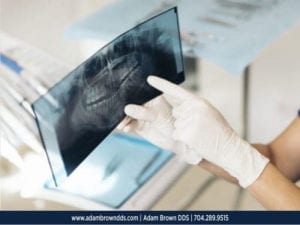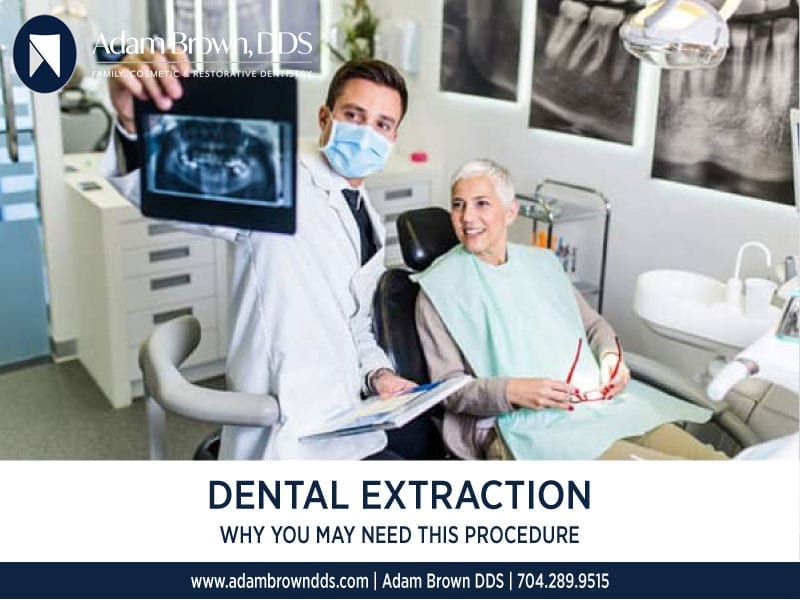Radiography: An Essential Part of Carolina’s Dental Choice
If you have been to the dentist, you have probably had x-rays taken of your mouth. While annoying, and sometimes painful, these x-rays are an essential part of any dental-care plan. Despite their significance, some dentists do not offer radiography to their patients. At Carolina’s Dental Choice, we see the value in these x-rays and believe that they largely contribute to positive dental health.

The x-rays used for dentistry are known as radiographs. There are two kinds of radiographs: the extraoral, an x-ray is taken outside of the mouth; and the intraoral, which is an x-ray taken from within the patient’s mouth. Intraoral radiographs are the one most commonly seen in dentistry and the one you might easily recognize from your last dentist appointment. The intraoral radiograph has become such a prominent part of dentistry because of the high level of detail that the x-ray provides, which can show the tooth, bone, and supporting tissues in a patient’s mouth.
Not only does the radiograph allow a dentist to see what is visible in a patient’s mouth, but it also allows him to see hidden dental structures, malignant and/or benign masses, signs of bone loss and/or wearing, and cavities, all of which might not be visible to the human eye but are detrimental to an individual’s dental health.
How It Works
Now that you know how important a radiograph can be to your dental health, you are probably wondering how they actually work. Surprisingly enough, they are actually quite simple. When your dentist asks you to put a film or sensor in your mouth, which is usually the most uncomfortable part of any radiograph, he is creating a base that is crucial to the image being taken. For a radiographic image to form, the radiation from the x-ray machine has to bounce off of the film or sensor and into your mouth. Different oral structures are penetrated by the radiation at different levels, which means they reflect different images on the film. For example,

teeth appear lighter because they are dense and do not allow for as much radiation to penetrate them. Dental caries (cavities), tooth decay, infections, periodontal ligaments, and alterations in bone density will typically appear darker on a radiograph since they are less dense as other dental structures. Based on the amount of radiation that is allowed to reflect on the film, an image is created that allows your dentist to see everything that is not visible to the naked eye, and then assess the best way to maintain your dental health.
At Carolina’s Dental Choice, our dentists see the value in a basic radiograph, like the ones previously discussed; but we do not stop there. Along with traditional radiographs, our office also offers three-dimensional (3D) imaging services. Our 3D digital device combines three different types of data with one x-ray unity; this cool tool is known as the Planmeca 3D imaging device. Proper use of this helps to accurately diagnose our patients since we understand that not all damage and disease is visible during a routine dental examination.
The Planmeca 3D imaging device is one of the newest innovations in radiography procedures. Instead of using standard x-ray film, the 3D images are digitally produced on a computer screen. Not only does this save production time since the images do not have to develop, but it also allows for them to be easily viewed, stored, or printed. On top of that, digital 3D imaging with the Planmeca only takes a fraction of the time and emits less radiation than a traditional x-ray would.
Our dental professionals at Carolina’s Dental Choice also use radiographs to help monitor periodontal diseases. By using x-rays, visual examinations, and professional cleaning techniques, our staff is able to play an effective role in minimizing the spread of common dental diseases.
Just like a regular dental examination, radiographs are crucial to a patient’s oral health. How often you need one depends on the success of your treatment plan and the advice of your dentist. If you are prone to tooth decay or cavities, then your dental professional may recommend that you get them annually or biannually. Being proactive and regularly checking for signs of decay can help your dentist plan for future treatment options and prevent major cosmetic issues in the future.
As Carolina’s Dental Choice, we offer the radiography services that will keep your smile beautiful. Come see us today!

